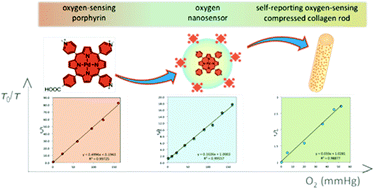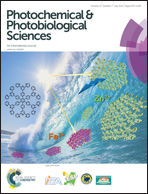Conjugatable water-soluble Pt(ii) and Pd(ii) porphyrin complexes: novel nano- and molecular probes for optical oxygen tension measurement in tissue engineering†
Abstract
Measurement of oxygen tension in compressed collagen sheets was performed using matrix-embedded optical oxygen sensors based on platinum(II) and palladium(II) porphyrins supported on polyacrylamide nanoparticles. Bespoke, fully water-soluble, mono-functionalised Pt(II) and Pd(II) porphyrin complexes designed for conjugation under mild conditions were obtained using microwave-assisted metallation. The new sensors display a linear response (1/τ vs. O2) to varying oxygen tension over a biologically relevant range (7.0 × 10−4 to 2.7 × 10−1 mM) in aqueous solutions; a behaviour that is maintained following conjugation to polyacrylamide nanoparticles, and following embedding of the nanosensors in compressed collagen sheets, paving the way to innovative approaches for real-time resolution of oxygen gradients throughout 3D matrices useful for tissue regeneration.


 Please wait while we load your content...
Please wait while we load your content...